Rome: History and Culture
Go to : ANCIENT ROME | MEDIEVAL ROME | RENAISSANCE ROME | BAROQUE ROME | ROMANTIC ROME | MODERN ROMEANCIENT ROME
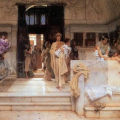
Roman aristocracy in the third century. B.C.
In the third century BC the Roman vir nobiles belonged to about 20 patrician and plebeian families; among these the most influential were the gens Fabia, the most illustrious and important patrician family, flanked by the gens Aemilia and the gens Cornelia all three of Latin origin, then there were the powerful Claudii and Valerii families of Sabine origin ...
Continue »
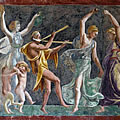
The bacchanal scandal of 186
One of the most important inscriptions from the Republican age that have been found is the Senatusconsultum de bachanalibus, discovered in the 17th century in the territory of Bruttium (today's Calabria). It is an edict issued by the consuls of the year who implemented the rules indicated as appropriate by the Senate of Rome and thus from the Idi of October 186 BC. The orgiastic rites were forbidden in the Bacchanalia ...
Continue »
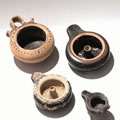
Oil lamps, ancient gadgets
The lamp is the first real technological tool used by man to illuminate and the first known examples date back to the second millennium BC; they were simple bowls filled with oil and with the wick resting on the rim. Over the centuries, the instrumentum underwent a notable evolution of technical characteristics such as the waterproofing of materials, such as terracotta and ceramic, or the application of a loop to handle it better, but also aesthetic according to the tastes of peoples and different geographical areas ...
Continue »
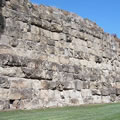
Tuff of Grotta Oscura
The position the Romans had chosen for their city was an accelerator of their expansion; after having absorbed the Latin and Sabine people they had to clash with the Veienti, an Etruscan people who controlled the Tiber Valley from the countryside to the north up to the campus salinarum ...
Continue »
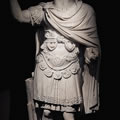
Lorica Romanorum
During the battles the Greeks already used body protections but for the Romans, a warrior people, they were an indispensable tool in the military campaigns that led them to become the greatest war power of all time. The best known armours are those represented in the statues of the emperors, consuls and high officers which were parade protections but very different from those used in battle, fundamental above all for the legionaries and which were used by them since the times of the Republic. What their characteristics were can be easily deduced from the many representations in statues and bas-reliefs and also in the descriptions left by ancient historians, in addition to the discoveries that take place in various sites in the territories that were of the Roman Empire ...
Continue »

Tabernae Medicae in Urbe
In the castra of the Roman legions engaged in wars campaigns were frequently identified the "valetudinarium", that was a buildings where the soldiers who had to be treated were housed,. These buildings existed not only at military camps but also in large farms, gyms, where they trained gladiators and athletes, so overall they were intended for the treatment of people who worked for the state.
The opening of valetudinaria for the cives is due to the same doctors who worked in the valetudinaria militares. These doctors open their tabernae along the most attended streets and famous were the medicatrinae near the Temple of Aesculapius on the Tiber Island where, under the control of the medicus and his disciples, sick people belonging to all social classes were treated. Also Galen, a famous physician of the 2nd century BC. he had begun by working in the castra of the legions ...
Continue »
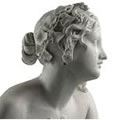
Lucretia and chastity
The figure of Lucretia and the values of chastity that she represents by raising her to the Olympus of the mythical figures of Rome have triggered the irreverence of Latin writers and poets since the times of the late republic.
Starting from the end of the first century. B.C. chastity took on different meanings; the Romans were no longer just warriors and their women no longer spun wool but bought precious silks from the east and adorned themselves with gold jewelry and precious stones ...
Continue »
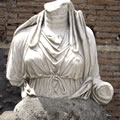
Priestess of Vesta
The Roman people since archaic times held in great consideration all the forces with which nature imposed itself and which the gods taught them to use and first of all the fire which, if in its most violent and wild expression was represented by Volcan, as heat that favors life was represented by Vesta ...
Continue »

Sculptures of Farnese Collection
During the long years in which the Farnese property on the Palatine Hill was affected by the construction of the Villa and then again in the arrangement of the Horti, a large amount of marble masterpieces of antiquity was found and could not have been otherwise since the Palatine had been the hill where the emperors of Rome resided. These works formed what is now known as the Farnese Collection that the powerful family began with the intent of making a collection that can be kept in their palaces but also to be shown as a sign of their power ...
Continue »
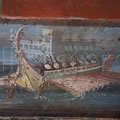
Naumachie, battles and water games
The Naumachia was the battle fought in the water; the term was used to indicate the clash that took place in the water, then it was used to indicate the reconstruction of the most famous naval battles and finally the name was also borrowed from the fixed or mobile structures, where the event took place ...
Continue »
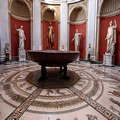
Porphyry, imperial marble
The Roman emperors had a preference for porphyry, the red marble that was extracted from Mons Porphyretes, from a quarry that was in the eastern Egyptian desert and the only one from which the purple porphyry was extracted. ...
Continue »
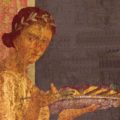
Tabernae deversoriae
One of the meanings of taberna deversoria is "inn"; with this name Varrone indicates it in his De Re Rustica, or as a taberna that was located along the roads that connected cities and small inhabited centers and that was created by a dominus fondi as an activity alongside the agricultural one and which consisted in offering travelers a place to stop and where can eat ...
Continue »
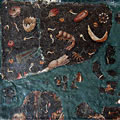
Asaratos Oikos
From Pliny the Elder we know the name of the artist to whom we owe the invention of two themes that were a model for the artists of Greek, and later Roman, mosaic art: Sosos of Pergamum lived in the second century. B.C. When Sosos was commissioned to create a decoration for the triclinium of the palace of Pergamum, he chose two themes that then became iconographic themes for the art of the ancient world: the doves drinking but , above all, the un-swept dining room or asaratos oikos ...
Continue »
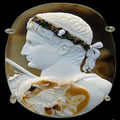
Augustalia
In 19 BC Augustus concluded a treaty with the Parties that allowed him to bring the kingdoms that were west of the Euphrates, including Judea, under the control of Rome as well as strengthening relations with others were already clientes as Cilicia, Commagene, Nabatea, Itturea and Emesa ...
Continue »

Flooding of the Tiber
Livy narrates that in 189 BC the Tiber flooded Campus Martius twelve times, but the event was exceptional only in the number of episodes while it was normal for the Tiber to come out of its riverbed. The floods of the Tiber were a normal fact for Rome, as is also evidenced by the legend that places the flood of the river at the origin of its foundation transporting the basket of the twins Romulus and Remus and making it aground in the reeds in front of the Lupercal ...
Continue »
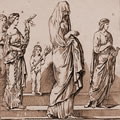
Telesina and her ten husbands
Martial says that from the third century. B.C. Roman women could easily divorce and remarry so much that he reports the case of a matron named Telesina who in thirty days managed to get married 10 times ...
Continue »

Roman imperial dynasties
There were only two families who managed to maintain supreme command over Rome for a century, thus also ensuring long periods of stability and wealth, the Julio-Claudia family and the Arria-Annia family (improperly remembered as Antoninian) and both linked from an identical connotation: the dynastic descent in the female line ...
Continue »

Marmor lunensis and others
The contact with the Hellenistic civilization made to discover the beauty of marble to Romans; in fact until the third century BC the temples and domus were built with stones and covered with earthenware bricks and even the ornamenta, statues and bas-reliefs, were in terracotta ...
Continue »
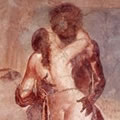
Figurae Veneris
In his work Ars Amatoria
Ovid tells about loving positions by calling them mille modi Veneris; in the intentions, the poet wants to explain how love should be governed by providing recipes
which are nothing more than techniques for procuring pleasure; in these we can define lessons of love technique, Ovid will surely have been inspired by figurae Veneris ...
Continue »

Magni Dives Romani
The meaning of the term "dives" is "rich" and wealth in Rome had its champions who were not only the emperors but also others before them in the republican age; perhaps the real champion in this special classification was Marcus Licinius Crassus who earned the nickname of dives ...
Continue »

Felix Feriae Augusti
Twenty centuries have passed but in Italy the feriae Augusti is still celebrated, or the Ferragosto whose literal meaning is "Augustus' rest". The feast was established in 18 AD to celebrate the end of the harvests and together with the other feasts that fell in the same period, it was a moment of rest between the hard work of the harvests and those to be faced with the vintage and sowing ...
Continue »
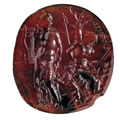
Cameos jewels of Ancient Rome
When the Senate granted Pompey the Great the Triumph for defeating Mithridates, behind the chariot of the winner the Roman citizens could admire the enormous treasure of the Pontus King that also included "precious stones to fill nine tables", as Pliny Senior tells. The Roman aristocracy was conquered by those precious stones and many were those who began to collect them, first of all Scaurus, son of the wife of Sulla, but also Caesar and later Augustus ...
Continue »
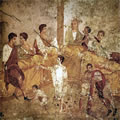
Meetings at the theater of Pompey
The life of the noble patricians was based on certain customs that facilitated social life and were indispensable for anyone with political aspirations. The important men of Rome, whether they were senators or magistrates or influential personalities, did not go to the thermae or portici only for otium, to have meetings with friends, but above all to increase their clientes, one of the functions for which large spaces public were specifically created; under the arcades it was normal to see talks of senators with mercatores or rather a magistrate with a poet ...
Continue »
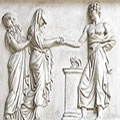
Confarreatio, sacred marriage
The rite of archaic marriage was called Confarreatio and dated back to the time of the monarchy; its name derived from the spelled focaccia (panis farreus) that the spouses parted to symbolize the future life together that they dedicated to Juppiter Farreus. In the Republican age it became the sacred marriage reserved only for the Flamines Maiores and the Pontifex Maximum and for the patricians who could have access to those offices ...
Continue »
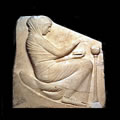
Venus Obsequens and Venere Ericina
In 295 BC aedilis Quintus Fabius Gurge let built a temple for the cult of Venus Obsequens (or "obedient", respectful of the rules); to finance the construction of the Temple, Quintus Fabius used the fines he had made pay to many Roman matrons who having taken part in the Vinalia Rustica, celebrations of August 19, had committed stuprum or had illicit sexual relations ...
Continue »
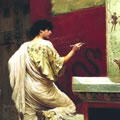
Ancient graffiti. Scripta currente et verba vulgata
Next to the Latin scholar and "monumental" there existed not only the Latin spoken in the streets but also the one written on the walls, and it may happen that visiting precisely the Roman Forum and the Palatine you can find these ancient graffiti. Scholars call this type of writing cursive capital because it is denoted by the uppercase character of the letters and the ductus (trend) of the writing where the letters are unrelated to each other and disjointed mainly due to the support, the wall or the tablet, which involves the use of the scratch technique, the result of which is what we now call graffiti. To obtain this type of writing it was used the graphium, a kind of burin in various materials sufficiently hard to be able to trace marks on the waxed wooden tablets; it could be about 20-25 cm long and on one side it ended pointy for writing and on the other it was wide and flat to be able to erase ...
Continue »
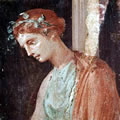
Hortensia, woman and lawyer
Hortensia was the daughter of Quintus Hortensius Ortal, a famous lawyer and rival of Cicero who had reached the highest positions, becoming consul in 69 BC and had allowed her daughter to have a higher education, the one the Romans reserved only for male children. The women of the Roman aristocracy were aware of hers competence of the law and hers oratory capacities that when they felt unjustly penalized by a decision of the triumvirs Ottavian-Antonius-Lepidus, which imposed a strong taxation on the matrons, asked her to be the spokeswoman of their dissent ...
Continue »
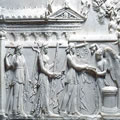
Fasti ancient calendars
For the Romans there was a sacred time and a profane time and, when spring began the Pontifical College of met to establish, following the lunar cycle, how the days would fall and therefore the days in which one could devote oneself to work and duties of the state and the other days that had to be dedicated to the gods. After establishing the days, the official calendar was made public by affixing bronze plates but more frequently by marble tables ...
Continue »
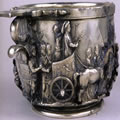
Silverware embossed in ancient Rome
In the early republican age, precious metals were not valued in Rome; the Roman civilization was still tied to ancient customs and therefore people were reluctant to use gold, silver and bronze for objects that, besides their practical function, were also aesthetically beautiful. But the other peoples of the Mediterranean had already given the precious metals an economic value and Rome had to adapt. A first change came after the first Punic war where it was necessary to have a stronger coin to go to trade in the Mediterranean and then the first silver coins were minted ...
Continue »
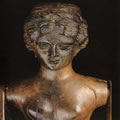
Children games
Even in ancient Rome, as in all ages, play activities have been preparations for life. There were group games both in imitation of the activities of the great as hunting or fighting with real representations, that is, what are today called role-playing games, and with toys ...
Continue »
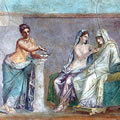
Transparent dresses of Roman women
In ancient Rome, the dress indicated the condition of women and was considered tutela corporis. The dress of the Roman woman was composed of three parts: the tunica, a shirt worn on the skin, the stola a robe worn over the tunica, and the palla which was a square cloak worn over the stola and used by matron to cover her head when she was in public. The clothing was similar to the male one but already around the V-IV century. B.C. the stole began to differentiate itself and became ad talos demissa, that is, long to the feet with a broad edge at the end called instita ...
Continue »

The Prisons of Ancient Rome
In ancient Rome, the prison was not a penalty in itself, but served to guard the guilty of a crime awaiting lawsuit and sentenced to capital punishment or other corporal punishment according to the "ius talioni", the law of retaliation. In the Republican age the sentences were carried out immediately, then during the empire the sentences began to be less rigid and the more complicated procedures for which it happened that a lot of time passed between the sentence and the execution ...
Continue »
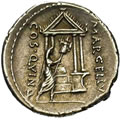
Spolia Opima, the highest honor of the conductors
The Senate of Rome recognized to great generals of Rome, including Aemilius Paullus Macedonicus, Scipio Africanus, Marius, Sulla, Pompey Magnus, Julius Caesar, Marcus Agrippa, Drusus senior the honor to celebrate the Triumph.
The Romans were vires of militaries, and the valiant conduct in the war involved moral and material recognition, but it was not enough to be courageous, but also to show that they were clever men, or that the military actions were conducted so excellent to obtainer the desired result: the victory ...
Continue »
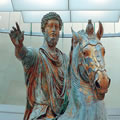
Equestrian statues in Rome
The only great equestrian statue of Roman times that has come to this day is that of Marcus Aurelius; the splendid jewel of fusion art in Imperial Rome has been saved as it was believed that the character represented was Constantine because the statue was found near the Lateran where was the domus of Helena, mother of Constantine. But where Elena's domus stood there were Horti of Lucilla, the mother of Marcus Aurelius, and almost certainly the statue ornamented Lucilla's garden ...
Continue »

An indecent proposal
In Rome, the Egyptian cults had come especially with the slaves and the cult of the Goddess Isis had soon made many followers among the people, but these cults were strongly opposed by the patricians and an episode is emblematic of this attitude. During the reign of Tiberius there was a fact about the indecent proposal that the patrician Decius Mundo did to the matron Paolina, wife of Sentius Saturninus; the knight offered two hundred thousand drachmas to the matron to spend a night of love with her; but Paolina refused each proposal and then the knight decided to resort to a stratagem worthy to Jupiter ...
Continue »
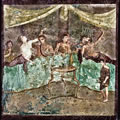
Gifts and notes in ancient Rome
The emperor Vespasian at parties for Martiae Kalendae used to distribute to the women gifts accompanied by notes that were called apophoreta and probably the poet commissioned was Martial, Flavian cliens of long time , which has even left a collection with that name ...
Continue »
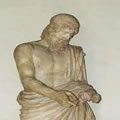
Magic formulas to heal
"Haut Haut istasis tarsis ardannabon": this was the magic formula that, according to Cato (De agricultura), did heal anybody from all evil and had to be sung every day after pater familias had performed the propitiatory ritual of healing, said luxum ut excantes ...
Continue »
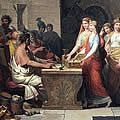
The luxury and the Lex Oppia
The only reality in which the Romans considered lawful the female action was limited to the domus, but also in this space women were not supposed to get involved in politics; according to the mos maiorum the woman should be a wife and mother and was treated as an asset that the pater familias controlled and passed, by marriage, from father to husband and became part of his familia to whom also went her possessions ...
Continue »
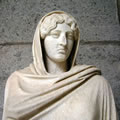
The secret name of Roman women
In ancient Rome, a own woman's name had to remain secret, in fact, while men have their name, then the name of the gens and finally the cognomen, women are always written as the name of the gens to which they belong - that often induces errors in historical treatises - and are distinguished with maior or minor based on the seniority or by an ordinal number, secunda, tertia ...
Continue »
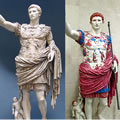
The colorful statues
The German archaeologist and erudite Johann Winckelmann in the second half of the eighteenth century claimed that the statues of the great Greek ...
Continue »
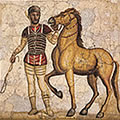
The Auriga
Even in the V century A.D. the auriga were heroes beloved by the people and by powerful of Rome so that the Roman emperor of the of the Orient did depict the charioteer Porfirio on the base of one columns of spine of ByzantiumCircus built by Constantine. The Auriga were the heroes of the Ludi Circensian even before they were introduced Ludi Gladiators. The Ludi Circensian were always the most beloved games in ancient Rome, The legend tells that they were instituted by Romulus to the Consualia feast but chariot races were very popular already among the Greeks and the Etruscans, from which the Romans borrowed, and they were related to Pelops myth and to chariot race organized by Oenomaus that saw him winner and new king of the land that from him took the name of Peloponnesus ...
Continue »
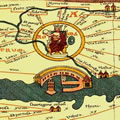
Ager nomentanum land of poets
The "villa" for the Romans, since ancient times was a house located outside the city walls and the word referred to both the residential building that ...
Continue »
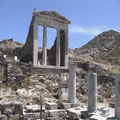
Italics Agorà in Delos
The mercantile activity in ancient Rome was certainly favored by good navigability of the Tiber River and the favorable conformation of the river ...
Continue »
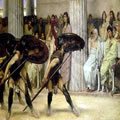
The initiation rites of Roman warriors
Mars is the ancient Italic god, represented - as told by Virgil - in the Archaic period with a headdress consisting of a helmet adorned by two pens ...
Continue »
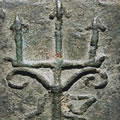
Coins of ancient Rome
The first coinage of the Rome history, according to legend, was desired by King Numa Pompilius and the currency was called nummo by its name; in reality ...
Continue »
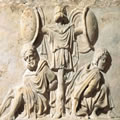
Venalicia, slaves markets
The wealth of Rome stemmed from the conquered territories resources and from the organization of their exploitation and, between all the resources that ...
Continue »
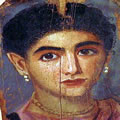
Pearls, empresses and the others
Pearls were much loved by the Romans and indeed one of the arcades that faced the central Via Sacra was called just Porticus Margaritarias and there ...
Continue »

The founding of Rome
The men who built their huts on the hills in front of the little island on the river, were looking for a possibility of better life. The boats that were going along ...
Continue »

The Roman saline
During the reign of Ancus Marcius part of the salary of the soldiers was given in salt from which the term wages derives. Plinius the Old man was asserting ...
Continue »
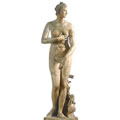
The heroic naked
The heroic naked style is born with the Greek art and is one of the motives of his originality, fundamental for the comprehension of his aesthetics as of that ...
Continue »

Julius Caesar’s funeral
Caesar assassination’s was on 44 B.C. at Ides of March (March 15) in the Curia of Pompey in the Campus Martius, was killed with 23 stab wounds; on the eve ...
Continue »
MEDIEVAL ROME

Municipalities and symbols of Romanita
In the twelfth century, but already during the eleventh, the cities that were becoming municipalities felt the overwhelming need to legitimize their own institution and then went in search of their origins. But the origins must be noble and therefore the roots must go back to antiquity, and if Rome was founded by the heirs of Aeneas, then the cities of the Italian municipalities must originate from the same mythical history ...
Continue »

The Knights Templar in Rome
At the beginning of the 12th century Rome was a small city with 20,000 inhabitants where the Pope lived "perched" in the Palaces of the Lateran; Hugues de Payns presented himself here to ask Honorius II for the approval of the new order rule which had been written by Bernard of Clairvaux. Hugues de Payns was accompanied by Godefroy de Saint Omer, both had been among the knights of the First Crusade, the one wanted by Urban II and who had conquered the Holy City and founded the Kingdom of Jerusalem. Since then pilgrims flocked from all over Europe to places of faith but the journey was long and they had to cross difficult lands for the climate and for the populations, hostile to the Christians, who lived there ...
Continue »
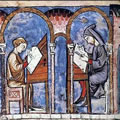
Scriptoria of late empire
Ancient history is full of stories about libraries that burn and not only because of lightning or fallen lamps, but also and above all for the looting and vandalism by invaders and, not least among the causes, the political will to overpower the losers. In Rome it was the advent of Christianity that caused the destruction of many libraries and of many books by ancient and, above all, pagan authors ...
Continue »

Rome Renaissance in 12th century
Pasquale II, pope from 1099 to 1118, faced his pontificate with a clear program that also included an urban revolution of Rome.In twenty years he tried to give a new face to Rome; centuries of raids and destruction to the detriment of monuments, fires and floods had transformed the capital of the Roman Empire into a sequence of semi-collapsed buildings. Historians believe that the Pope's commitment to the arrangement of entire areas of Rome was closely linked to the need to create liturgical paths to be proposed to the many pilgrims who each year came to Rome ...
Continue »
RENAISSANCE ROME
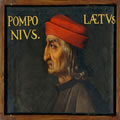
Studium Urbis
In 1303 with the bull In Supremae praeminentia dignitatis, Pope Boniface VIII established in Rome the Studium Urbis, or an institution for higher education that was intended for non-prelates. A similar institution had already been established in Bononia (Bologna) in 1088, it was called Alma Mater Studiorum and its birth took place with different premises, that is, they were groups of students who met and through the collectio paid a teacher who were themselves to choose ...
Continue »

Invitation for lunch by Cardinal Aldobrandini
The pontificate of Clement VIII, formerly Hippolytus Aldobrandini, was under the sign of the greatness and munificence of the Papacy and nepotism, in fact he appointed two nephews Pietro Aldobrandini and Cinzio Passeri Aldobrandini cardinals ...
Continue »
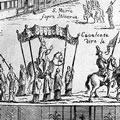
The golden roses of the Popes
In the chronicles of the papal court, there is also the list of the expenses of 1736 and among them is recorded: To Michele Carlier Silversmith to account of the price of the Golden Rose 865.00 scudi
...
Continue »
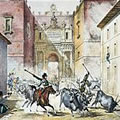
Rush of Berbers
In the nineteenth century the world capital of the Carnival was Rome; until the fifteenth century was the feast that the ordinary people made on the streets of Testaccio to celebrate the end of ...
Continue »
BAROQUE ROME

The stuprum in Rome in the 18th century
It was a provision issued in the “Overhead Announcement” by the Cardinal Silvio Valenti, Secretary of State of Pope Benedict XIV that remained in force until 1833 when Gregory XVI published the new penal regulation. Cardinal Silvio Valenti Gonzaga is responsible for the collection of many heterogeneous and sometimes extravagant laws issued from 1740 to 1756, among these affecting the extreme severity with which it was intended to punish "the kiss in public". The sentence imposed finds its explanation when it is clarified that the description of the crime as a "kiss in public", of a clear eighteenth-century mannerism, actually struck the "stuprum" and the penalty was revised only a few years later by inserting a loophole for which the crime it was extinguished if the stuprum perpetrator then married his victim ...
Continue »
ROMANTIC ROME
MODERN ROME

Escher in Rome
Among the many artists who could not escape the charm of the Grand Tour there was also Maurits Cornelis Escher who lived in Rome in what he himself called "the best years of my life"; Here in 1926 he made his first exhibition by which began its fame in the world. He arrived in Rome in 1925 and settled in the neighborhood of Monteverde Vecchio at the foot of the Janiculum, in a small house on Via Poerio that he had bought and where he had settled after living in Frascati for a year; from his Roman house he periodically left for trips to discover Italy. He particularly loved the Sienese lands, the towns of the Amalfi coast - where he had met and married his wife in Ravello -, of Calabria and Sicily ...
Continue »
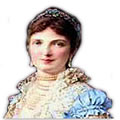
Cultural circle of Queen Margaret
Rome was the capital of the Kingdom of Italy only from 1870 to 1946 and of the four kings and their queens only one was able to win the affection of the Italians, “Margaret”who was queen from January 1878 to July 1900 when the King Umberto was killed in Monza. Although Umberto the I was the second king of Italy, Margaret was the first Queen of Italy ...
Continue »






